You need to learn graphic design, but don’t know exactly how to start.
Well:
The most effective way I know for learning graphic design on your own is to start studying the main rules and skills used in graphic design. In fact, the most effective way of learning graphic design is to first understand design principles, which are the foundation of any type of design.
And books are an excellent way of learning graphic design principles as a beginner.
In this post, I share 18 graphic design books for beginners you can get today to start learning graphic design. Stick to the end and I’ll explain how you can start learning graphic design as a beginner.
Table of Contents
- The Accelerated Graphic Designer: A Proven Shortcut for Learning Graphic Design Once and For All
- Graphic Design Rules: 365 Essential Design Dos and Don’ts
- Graphic Design School: The Principles and Practice of Graphic Design
- The Elements of Graphic Design
- Graphic Design For Everyone: Understand the Building Blocks so You can Do It Yourself
- The Non-Designer’s Design Book
- Visual Grammar
- Creative Workshop: 80 Challenges to Sharpen Your Design Skills
- Creating a Successful Graphic Design Portfolio
- Principles of Logo Design: A Practical Guide to Creating Effective Signs, Symbols, and Icons
- Logo Design Love
- Iconism: Designing Modern Icons and Pictograms
- Designing Brand Identity
- Why Fonts Matter
- Layout for Graphic Designers: An Introduction
- Grid Systems In Graphic Design
- A Smile in The Mind: Witty Thinking in Graphic Design
- Paul Rand: Conversations With Students
18 Graphic Design Books for Beginners
Thinking Like A Designer
Apply The Golden Rules of Design to Hack Visual Composition, Unlock Your Creative Self, and Transition Into a Rewarding Path or Career
Stop wasting time learning unnecessary skills from random tutorials and start learning what matters the most in design.
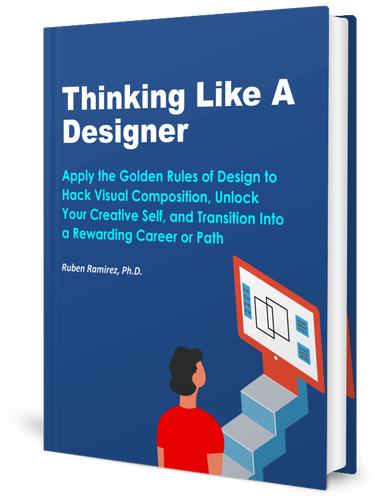
The first book I’m recommending is by yours truly and I believe its the best book for getting you started in graphic design quickly and effectively. I’ve been teaching graphic design in college for years, but I also learned graphic design the hard way. And the only way to learn graphic design successfully is by first understanding the rules of design, which can be learned. This book extracts the most important design rules and principles in a clear, actionable way with tons of visual examples.
Book Highlights:
- Summarizes the foundations of graphic design to get you started quickly and with confidence
- Clear and concise explanations that will help you understand the fundamental aspects of design theory
- Over 100 images exemplifying the rules of design
Disclosure: This post may contain affiliate links and as an Amazon Associate, I earn from qualifying purchases. I only recommend products that I love, trust, and would add value to my readers.
This book is a superb shortcut to learning tried and tested rules of graphic design. This actionable, easy to understand guide compiles more than 300 tips, rules, and guides on how to successfully avoid mistakes as a designer and, more importantly, follow best practices. The book provides short, on-point explanations and useful visual examples throughout. Particularly useful for self-taught designers.
Book Highlights:
- Actionable explanations and visual examples
- Valuable advice particularly suited to beginners and self-learners
- Professional advice to get you started in real-world design
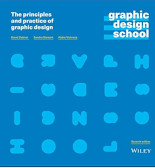
Graphic Design School: The Principles and Practice of Graphic Design
by D. Dabner, S. Stewart, and A. Vickress
This book is whole course on graphic design, which is why I’m recommending it for beginners. It gives you the whole overview of what graphic design is and how to become a professional graphic designer. It covers not only the fundamentals of design, but also how to develop compositions and delivering the finished product. It covers the most important formats, such as apps, social media, magazines, websites, and books, among others.
Book Highlights:
- Complete overview of graphic design practice and the profession
- Covers diverse topics, such as color, typography and typefaces, information architecture, file organization, web design, layout, and more
- Includes case studies and student assignments for testing skills and concepts
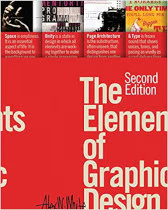
The Elements of Graphic Design
by Alex White
This is an excellent book for beginners who want to understand the fundamentals of graphic design. In fact, this is one the first books that really helped me learn design theory. This second volume features a new part on online design, as well as timeless takes on page architecture, space, and unity. The book provides numerous images and examples of the principles discussed, making it ideal for beginners who want to learn the fundamentals of graphic design.
Book Highlights:
- Offers easily understood concepts
- Identifies and displays the most important pictures, phrases, and ideas
- Arranges a plethora of material and illustrations demonstrating effective graphic design
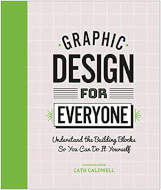
The strength of this book is that it distills the fundamental theories of graphic design into simple concepts that the beginner designer can easily understand. In addition, the book provides 10 step-by-step projects that teach you how to create business stationery, invitations, an online newsletter, and website, among others. Cath Caldwell offers essential skills and ideas to aspiring graphic designers in a clear and engaging way.
Book Highlights:
- Walks you through the fundamentals of graphic design in a clear and effective way
- Provides concrete, step-by-step exercises for learning the most important design formats
- Especially written for beginner graphic designers
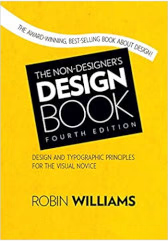
The Non-Designer’s Design Book
by Robin Williams
William’s book introduces students to the foundational ideas of design. It deconstructs design principles and provides case studies to illustrate and guide readers carefully. It includes topics such as design concepts, color layout, font, and character design with a mixture of typefaces and is geared for beginners.
Book Highlights:
- Offers practical design tips
- Suitable for someone without any professional knowledge
- Covers the essential principles that beginners must know
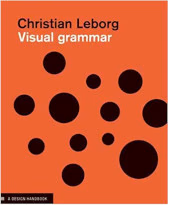
Visual Grammar
by Christian Leborg
Visual Grammar explains how the interaction between visual elements can produce meaning for an audience. In other words, the book covers how to use visual language to communicate effective messages. This book serves both as a comprehensive encyclopedia of the fundamentals of graphic design as well as an introduction to visual communication.
Book Highlights:
- Explains the building blocks that make up any design
- Provides practical advice on how to present designs to clients and audiences
- Successfully explains hard-to-understand concepts in a way beginners can understand
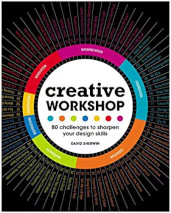
Creative Workshop: 80 Challenges to Sharpen Your Design Skills
by David Sherwin
This book offers a collection of 80 creative tasks spanning from typeface creation to website layouts. These tasks are designed to improve your knowledge and skills of graphic design by guiding you in the application of theory to design projects. It encourages you to be bold and experiment with fresh ideas. The book also contains helpful methodological approaches and design advice from famous artists.
Book Highlights:
- Gives you concrete assignments to help you improve your design skills
- Allows you to exercise your creative abilities in a variety of ways and through various design applications
- Offers excellent exercises suited for beginners
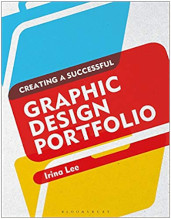
Creating a Successful Graphic Design Portfolio
by Irina Lee
If you are serious on becoming a professional graphic designer, creating a portfolio from the very beginning will be your best gateway to getting hired. In fact, building your portfolio is one the best steps you can take to become a graphic designer faster. This book is a practical guide on beginning to compile your best way to show potential employers or clients.
Book Highlights:
- Professional advice that will help you start a career in graphic design
- Lots of visual examples from diverse designers to give your perspective and ideas
- Useful tips not only on portfolios, but also on getting hired and doing freelance work
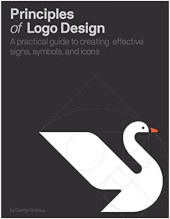
I’ve been following George Bokhua for quite some time now, and his logo design skills and style are amazing. The fact that he is a self-taught designer makes his work even more impressive. He uses simple shapes and lines to create beautiful and effective icons and logos, a technique that is excellent for the beginner designer.
Book Highlights:
- Real-world advice from a self-taught designer
- Teaches logo techniques that are particularly useful to beginner graphic designers
- Provides lots of visual examples that are ideal for learning logo design
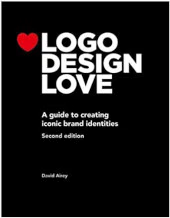
Logo Design Love
By David Airey
This book is so much more than a book about logos: It’s a manual for creating outstanding visual identities that are memorable and effective. Airey not only explains the principles of logo design in a clear way, but also shows a step-by-step process for creating effective logos. The book is filled with real-world logo examples and breaks down the main components of effective logo design.
Book Highlights:
- Explains the principles of logo design in a way useful to beginner designers
- Shows a step-by-step process of creating a logo
- Has lots of pictures and examples for explaining the main concepts

Iconism: Designing Modern Icons and Pictograms
by Sandu Publications
This book is practical as well as it is beautiful. It’s a visual guide for creating icons that communicate accurately and effectively. In fact, I teach iconic design in my courses because icons have become such an important aspect of visual communication in general. Today, everything incorporates icons, from logos to maps, digital apps, signs, and menus, to name only a few. This book will not only teach you about iconic design, it will also give you hours of visual joy.
Book Highlights:
- Practical explanations about creating and using icons as communications
- Valuable advice particularly suited to beginners and self-learners
- Professional advice to get you started in real-world design
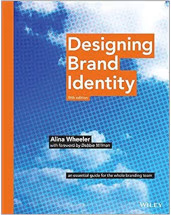
Designing Brand Identity
By Aleena Wheeler
This book provides all you need to know about branding and brand identity, a topic that is crucial to professional graphic design. The book is organized around trademark foundations, branding principles, and case studies of real brands. It walks you through an actionable five-stage method for identity preparation and management, providing detailed guidance to both beginner designers or complete marketing groups. Designing Brand Identity is one of the first books to break down the branding approach into a standard framework.
Book Highlights:
- It is a collection of tried and true methods from around the world
- A thorough, practical, and simple-to-understand reference material
- It shows a complex design structure in which each aspect has an impact on the others
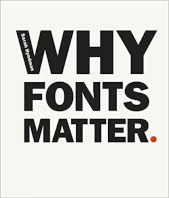
Why Fonts Matter
by Sarah Hyndman
Typography is an incredibly important skill to learn as a graphic designer. Type selection is not a random process. In fact, since today there are so many typefaces to pick from, it’s become very difficult to understand how to combine and use them. This book delves into the fundamentals of type and explains how different fonts elicit diverse responses in humans.
Book Highlights:
- Focuses on the impact fonts have on audiences
- It discusses why various fonts or designs elicit specific feelings and memories
- Gives a fundamental overview to the use of fonts in graphic design
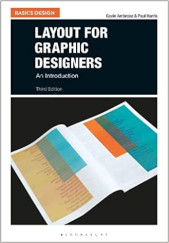
Layout for Graphic Designers: An Introduction
by Gavin Ambrose
Layout is an aspect of graphic design that you must master early on if you want to become a successful graphic designer. The principles and layout are crucial for composing day-to-day graphic applications, including flyers, websites, newsletters, and print content, to name only a few. This book is an excellent updated introduction to the main aspects of layout and composition.
Book Highlights:
- Provides a glossary of terms you need to understand with useful definitions
- Each chapter incorporates interviews with professional discussing real-world scenarios
- Lots of visual examples to make key concepts clear and comprehensible
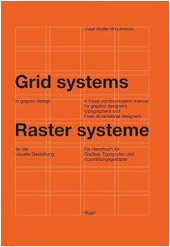
Grid Systems In Graphic Design
by Josef Müller-Brockmann
This book can be considered the handbook of layout in graphic design. Every visual element must be placed on a page or substrate: A piece of paper, a screen, a t-shirt. Grid systems provide the foundation of structuring design elements in a way that they are visually pleasing and effective. The book covers the conceptual framework and usefulness of the grid system, as well as the steps to build grid systems for layout.
Book Highlights:
- Provides frameworks for guiding beginner designers
- Explains the grid system in depth and why it is important to follow it
- Filled with diagrams, pictures, and examples of how to apply grids in any graphic design application

A Smile in The Mind: Witty Thinking in Graphic Design
by Beryl McAlhone, et. al.
This book takes a clever approach to graphic design since it demonstrates how to apply wit to graphic design. It is jam-packed with pictures and examples that show the most successful brands employ creativity as a fundamental strategy. It analyzes the many strategies used by well-known designers featuring artists who share how they incorporate wit and creativity into their work.
Book Highlights:
- Influential and informative advice that every beginner can understand
- It unpacks how creative works and is applied to design
- Entertaining, yet helpful and informative
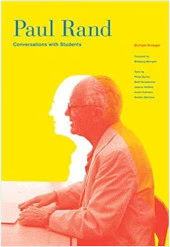
Paul Rand: Conversations With Students
by Michael Kroeger
Paul Rand is among the most famous and respected designers of all time. His logos and brand identities are among the most recognized in the world, including ABC, Westinghouse, UPS, and IBM. This short seminal book presents Rand’s last interview, at Arizona State University, prior to his death in 1996. The book presents his talent for analyzing design with style, intelligence, and fun. One of it’s famous quotes include:
“Design is relationships. Design is a relationship between form and content” – Paul Rand
Book Highlights:
- Timeless inspiration for beginner graphic designers
- Filled with valuable nuggets of knowledge
- A must-have reference book
Should You Become a Graphic Designer?
How do you know if you should become a graphic designer?
To become a graphic designer you need to have an orientation for visually representing things, but you don’t have to be an excellent artist or have tremendous skills. Perhaps you have excellent and neat handwriting skills or you’re always doodling or sketching. This might mean that you have an aptitude for successfully learning the theory and skills fundamental to graphic design.
This is what I mean:
As a kid, perhaps you always got in trouble in elementary school for scribbling images on your science assignment rather than listening carefully to your teacher’s lecture. Maybe you’ve always had an artistic streak in you.
How You Can Start To Learn Graphic Design as a Beginner
You might have the aptitude and the passion to learn graphic design, but might not have the necessary knowledge and skills yet. This can be very frustrating, especially for beginners.
My advice:
Don’t worry so much about what you cannot do just yet.
Graphic design is a discipline that can be learned because it is guided by a set of fundamental rules and skills that are specific and precise.
At first, you have to concentrate your efforts on learning the main concepts, rules, and skills of graphic design in order to get off the ground, so to speak.
And What Is Graphic Design?
Graphic design is a career in which people produce visual materials to convey ideas. Designers utilize icons, shapes, color, typography, images, and other visual elements to fulfill customers’ individual demands for communicating messages.
Designers concentrate on communicating visually to positively affect user engagement and the reception of messages.
How Can You Become a Graphic Designer
If you want to become a graphic designer, one of the first aspects you need to learn is design theory.
That is:
You first have to understand graphic design principles.
Books are an excellent way to get you started right away learning the theory and principles that make up graphic design as a profession.
The following books will give you a solid foundation in graphic design, especially if you are a beginner.
Well:
All those could have been early signs of becoming a great graphic designer.
Conclusion: Get Some Graphic Design Books And Start Learning Now
In conclusion, graphic design may sound complicated and hard to do at first, but with the use of the right materials and resources, it’s not entirely impossible for you to learn, even at home.
Graphic design books are an excellent option for beginner graphic designers to learn the fundamental principles of graphic design.
What are your favorite books for learning graphic design?
Quick and Dirty Graphic Design For Non-Designers
A Hands-On Mini Course to Help You Grasp and Practice Design Principles, Computer Skills, and Visual Formats Quickly
✅ Understand the most important rules of design to start seeing and thinking like a designer
✅ Get started with computer exercises to produce real designs with design programs you already have
✅ Create real compositions, such as event posters and social media posts to actually start designing


